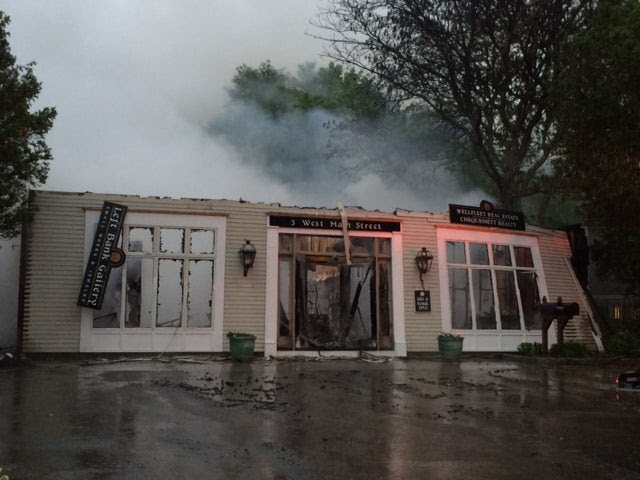We are so grateful for the support of our community, near and far. We have the most wonderful artists, neighbors and customers in the world.
|
At 4am Tuesday morning we had a call from the Wellfleet fire department. When we arrived, the roof had collapsed and all was lost.
Since then, the outpouring of love and support has been unbelievable. We've heard from friends near and far and are overwhelmed with how attached people are to these galleries. Thank you for your stories, your memories, and your many offers of support. We appreciate every one! Honestly, we are still reeling. But new things are arriving as we write, so there is much to keep us busy. For the short term, we're reconfiguring part of the Commercial Street gallery to accommodate the jewelry. When possible, the Orleansgallery will also take on Main Street's jewelry artists. The artists whose work was in the gallery when it burned were equally devastated, and yet have been generous beyond imagination. Many are sending new work while we reorganize. Obviously everything in the galleries is precious to us, but the jewelry, crafts and art we have this summer is especially meaningful. This is what handmade is all about. While we figure it all out, please keep visiting us on Commercial Street in Wellfleet and Cove Road in Orleans. And again, thank you. |




















